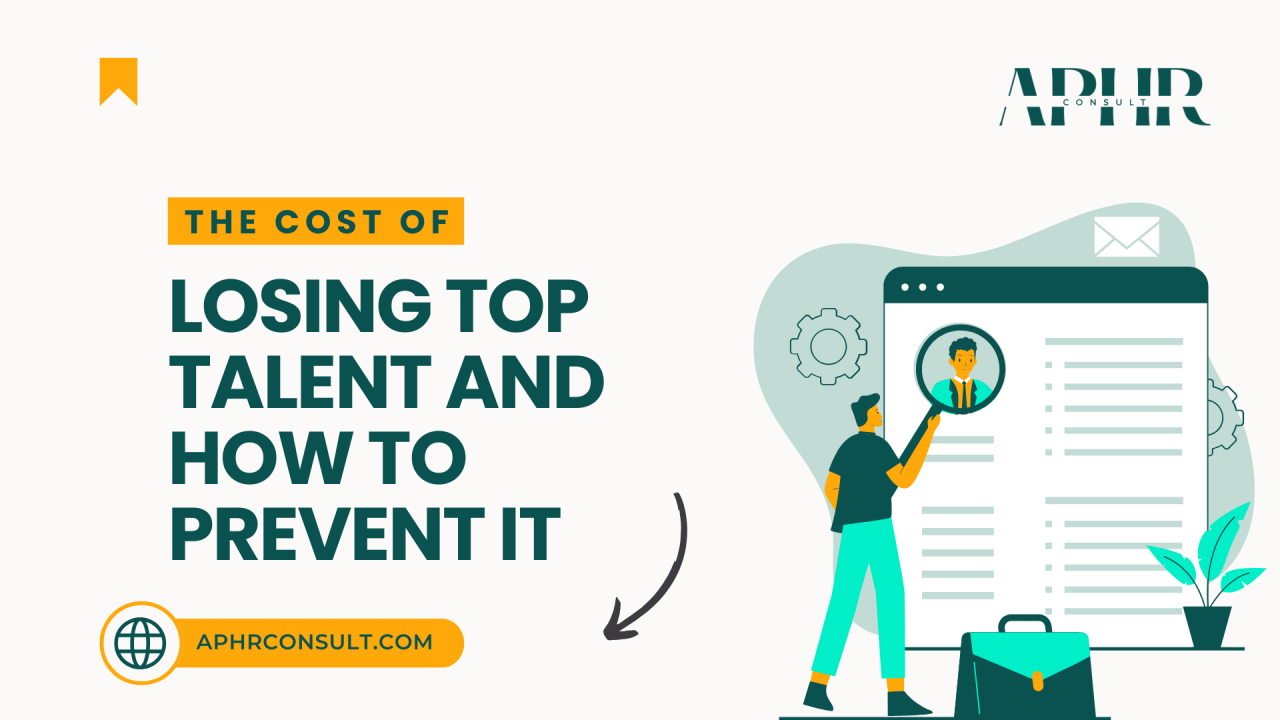The Cost of Losing Top Talent and How to Prevent It
Talent is the backbone of any organization. Employees drive innovation, maintain customer relationships, and contribute to business growth. However, many companies fail to recognize the real cost of losing top talent until the damage is done. Employee turnover—especially at the senior or high-performance level—can have severe financial, operational, and cultural implications for a business.
In this article, we will explore the true cost of losing top talent and practical steps organizations can take to retain their best employees.
The True Cost of Losing Top Talent
1. Financial Costs
Replacing a top-performing employee is expensive. Research indicates that the cost of replacing an employee can range from 50% to 200% of their annual salary. This includes expenses related to recruitment, hiring, training, and onboarding. Additionally, the loss of a productive employee can lead to decreased revenue and efficiency during the transition period.
2. Loss of Institutional Knowledge
Top talent often possesses deep industry knowledge, specialized skills, and insights into company operations. When they leave, they take that expertise with them, leading to a knowledge gap that is not easily replaced. This can slow down processes, disrupt projects, and create inefficiencies that affect business performance.
3. Impact on Team Morale and Productivity
Employee turnover can have a domino effect on team morale. When high performers leave, remaining employees may feel overburdened or demotivated, leading to decreased productivity. Additionally, frequent departures create uncertainty and can damage an organization’s culture and employee engagement.
4. Competitive Disadvantage
In competitive industries, losing top talent to competitors can be detrimental. High-performing employees often have strong relationships with clients, and their departure can lead to lost business opportunities. Moreover, competitors who acquire your former employees may gain access to valuable industry insights and best practices.
5. Employer Brand and Reputation
High turnover rates can damage an organization’s reputation, making it difficult to attract new talent. Prospective employees often research company reviews and employee experiences before joining. A pattern of frequent departures may signal a toxic work environment, discouraging potential candidates from applying.
How to Prevent the Loss of Top Talent
1. Competitive Compensation and Benefits
One of the leading reasons employees leave is inadequate compensation. Companies must regularly review their salary structures and benefits packages to ensure they remain competitive. In addition to base salaries, offering performance-based bonuses, health benefits, flexible work arrangements, and professional development opportunities can enhance employee retention.
2. Strong Leadership and Management
Employees often leave managers, not companies. Investing in leadership training ensures that managers are equipped with the skills to engage, support, and develop their teams. Encouraging open communication, providing regular feedback, and recognizing employees’ contributions can significantly improve job satisfaction.
3. Career Development and Growth Opportunities
Top talent seeks growth. Organizations that provide continuous learning opportunities, mentorship programs, and clear career advancement paths are more likely to retain their best employees. When employees see a future within the company, they are less likely to seek opportunities elsewhere.
4. Positive Work Culture and Employee Engagement
A strong organizational culture fosters loyalty and engagement. Companies should prioritize employee well-being by promoting work-life balance, creating inclusive work environments, and fostering a sense of belonging. Regular employee engagement surveys can help identify concerns and areas for improvement.
5. Effective Performance Management and Recognition
Employees who feel valued are more likely to stay. Organizations should implement structured performance management systems that provide constructive feedback and recognize achievements. Regular check-ins, rewards programs, and appreciation initiatives can reinforce employee commitment.
6. Exit Interviews and Proactive Retention Strategies
Understanding why employees leave is key to preventing future turnover. Conducting exit interviews provides valuable insights into workplace challenges and areas for improvement. Additionally, implementing proactive retention strategies—such as stay interviews, mentorship programs, and flexible work arrangements—can help address employee concerns before they escalate.
Conclusion
Losing top talent is costly, but it is also preventable. Organizations that prioritize employee satisfaction, invest in professional development, and create a supportive work environment will experience lower turnover rates and higher business success.
At APHR Consult, we specialize in helping businesses develop tailored HR strategies that enhance employee retention, strengthen workplace culture, and drive organizational growth. If you’re looking to build a work environment that attracts and retains top talent, contact us at hello@aphrconsult.com today.
Written by: Folashade Oyetunji
Similar Articles
FROM HUMAN RESOURCES TO HUMAN IMPACT: HR as the Engine …
Accelerating Action: Practical HR Strategies for Gender Equity International Women’s …
INTERNATIONAL DAY OF EDUCATION: Why Employee Training and Development is …

